Eine Ecke ist mehr als zwei Wände.
Plötzlich sind die Orte wichtig geworden: "If-Telga Tal-Bect 15, Victoria, Gozo, 2014". Als ob es nicht egal wäre, wo auf der Welt oder gar auf welcher Hausnummer sich diese doppelte Holztüre befindet, zu der drei in die konkave Laibung der Hausmauer eingefügte Steinstufen emporführen. Unklar bleibt aber, welche "Ecke" Robert Zahornicky in diesem Foto meint: jene zwischen Mauer und Tür oder jene beiden zwischen den geraden Mauerteilen und dem konkaven, welche diesen zu einem Mauervorsprung machen. Wer diese Laibung gebaut hat, hat mehrfach um die Ecke gedacht.
Das älteste Foto einer Ecke, das ich von Robert Zahornicky kenne, benennt keinen Ort. Der dazugestellte Text (im Katalog "Das Andere", Cult Edititon Nr. 6, Wien 1991) "Das Wesen der Wirklichkeit ist die Zahl" stammt von Pythagoras. Zahornicky liebt Zitate, Verweise, Referenzen. Das Foto zeigt (erhabene) Zahlen an einer Wand, aber viel subtiler wirken eine Kamintür, eine abgedeckte Elektrodose und ein vager Mauervorsprung in der linken oberen Ecke. Es handelt sich um den Ansatz eines Gewölbes. Eine zarte Linie verräumlicht die leere Wand, lässt eine "Ecke" erahnen, markiert den Übergang zwischen zwei Raumteilen.
"San Clemente, Roma, 2005" erinnert an das anonyme Gewölbe von 1991: Würde nicht in der Mitte der Fotografie ein senkrechtes Kabel verlaufen, dass die Wandfläche teilt und dessen Knick im obersten Viertel andeutet, dass hier ein Gewölbe ansetzt, bliebe die Ecke unsichtbar; nur der grünliche Flechtenbewuchs entlang des horizontalen Übergangs zwischen gerader und gewölbter Wand gäbe einen Hinweis, oder die perspektivische Verzerrung der Graffitis an den beiden aufeinanderstossenden Wandflächen. Als Verweis auf den Aufnahmeort der Fotografie ist "San Clemente" ohne besondere Bedeutung; als integraler Bestandteil des Werkes verleiht der Text, so wie das Pythagoras-Zitat von 1991, dem Bild eine zusätzliche Dimension.
Robert Zahornicky ist nicht plötzlich ins dokumentarische Genre gewechselt, sondern dem konzeptuellen Denken treu geblieben. Bezeichnung, Ort und Jahreszahl stehen gleichberechtigt nebeneinander. Das Foto "Stalingrad, Paris, 2004" könnte auch Glasarchitektur von Bruno Taut illustrieren. Und auf die Idee, dass sich eine blau gefärbelte Raumecke, deren einziges Gestaltungselement aus einer verfliessten Sockelone zu bestehen scheint, in einer Kathedrale in Kiev befinden könnte, wird man nicht so leicht kommen. Zahornicky liebt solche Überraschungen, Ironien, Irritationen. Mit den Ecken hatte er es dabei schon immer und immer wieder. In den Pariser Nachtstücken der Serie "Primal Light " (2004) spielen Ecken, Kanten und Mauervorsprünge, die das Licht der Nacht ins Dunkel der Strassen modellieren, eine für das Bild entscheidende gestalterische Rolle. Sie retten das Abgelichtete vor seiner Abstraktion durch die fotografische Bildgebung. Interessanterweise spielt aber die Kante, das äussere Gegenstück zu der nach innen gerichteten Ecke, keine Rolle im Werk Zahornickys, es sei denn in der Form des Mauervorsprungs, etwa in "Stadtmuseum München. 2012". Der Mauervorsprung in München stülpt die Ecke in den Raum, gibt jeder der beiden Wände ihre eigene Ecke.
Genau dies ist das Interesse von Robert Zahornicky, das er, wie immer, visualisiert, indem er es fotografiert. Was geschieht, wenn zwei Wände aufeinander zu streben? Was geschieht, wenn Stalingrad nach Paris verlegt wird? Was geschieht, wenn dieses Pariser Stalingrad aussieht wie von Bruno Taut gebaut ; und was geschieht, wenn man in einer Wandecke (einer Galerie) fotografisch eine nicht existierende Ecke rekonstruiert? Oder die AusstellungsbesucherInnen derart in die Ecke treibt, sie zu Eckenstehern macht wie einst die Kinder, die strafweise "eckenstehen" mussten?
Robert Zahornickys Hang zur Ironie darf so wenig gering geschätzt werden wie sein Drang, mit der Kamera zu philosophieren. Zahornicky arbeitet stets am Paradoxon der Fotografie entlang, etwas vollkommen Neues in einem Bild zu erschaffen, das gleichzeitig immer auch eine Wirklichkeit abbildet und sonst nichts. Die Bildertitel der "Ecken" sind nichts anderes als reine Poesie ("Ajuntament d'Evissa, Ibiza, 2007) oder pure Ironie ("kk Telegraphenamt Wien, 2013" zeigt auf der rechten Wand ein grosses rot geschriebenes "A1" - so heisst der Marketingauftritt der Telekom Austria, also des gegenwärtigen Nachfolgeunternehmens des kk Telegraphenamtes, als Mobilfunkbetreiber). In jedem Fall schärfen die Fotografien Robert Zahornickys unsere Wahrnehmung sowohl für die Ecken, zwischen denen wir uns ausserhalb der Natur bewegen (die das andere grosse Thema Zahornickys ist), als auch für die Fotografie selbst, die einen Raum etabliert, indem sie uns nichts als dessen Ecken zeigt.
Peter Zawrel
A corner is more than two walls.
Suddenly the locations have become important: If-Telga Tal-Bect 15, Victoria, Gozo (2014). As if it were of no importance where in the world or, indeed, at which house number these double wooden doors were to be found, with three stone steps inserted in the concave embrasure of the house-wall leading up to them. What remains unclear, however, is which “corner” Robert Zahornicky is referring to in this photo: the one between the wall and the door or the two between the straight parts of the wall and the concave, which make it a wall projection. Whoever built this embrasure was thinking around more than one corner.
The oldest photo of a corner by Robert Zahornicky that I know
of does not name a location. The text that goes with it (in the catalogue Das Andere, Vienna: Cult Edition Nr. 6, 1991) Das Wesen der Wirklichkeit ist die Zahl (the soul of reality is the number) is by Pythagoras. Zahornicky loves links and references. The photo shows (sublime) numbers on a wall, but much more subtle is the effect of a stove door, a covered electric plug and a vague wall projection in the top left corner. It is the base of a vault. A gentle line makes the empty wall three dimensional, suggesting a corner and marking the transition between two parts of the room.
San Clemente, Roma (2005) reminds one of the anonymous vault of 1991: were it not for a vertical cable running through the middle of the photograph, dividing the wall surface and bending in its top quarter so as to suggest that a vault begins here, the corner would be invisible; only the greenish lichens along the horizontal transition between the straight and the curved walls could be a hint, or the distortion of perspective in the graffiti on both walls as they meet. As a reference to the location where the photograph was taken, San Clemente is not especially meaningful; as an integral part of the work, the text gives the image another dimension,as does the above-mentioned quotation from Pythagoras.
Robert Zahornicky has not suddenly switched to the documentary genre, but has remained true to conceptual thinking. Name, location and year stand alongside each other as equals. The photo Stalingrad, Paris (2004) might equally well designate architecture in glass by Bruno Taut. And the idea that a bluish corner whose only design element is a tiled podium base might be located in a cathedral in Kiev would not occur to one very easily. Zahornicky loves such surprises, ironies and irritations. His concern is with corners, again and again. In the pictures from nocturnal Paris in Primal Light (2004) corners, edges and wall projections, which model the night light into the darkness of streets, have a determining role to play in the pictures’ design. They rescue what is lit from abstraction by the act of photographic image creation. Interestingly, however, the ledge, the exterior counterpart to the interior orientation of the corner, has no role to play in Zahornicky’s work, except in the form of a wall projection, such as the one in Stadtmuseum München (2012). The wall projection in Munich pulls the corner into the room, giving each of the two walls its own corner.
This is precisely what interests Robert Zahornicky, what he, as
always, visualizes by photographing it. What happens when two walls move towards each other? What happens when Stalingrad is moved to Paris? What happens when this Parisian Stalingrad looks as if it had been built by Bruno Taut? And what happens when one uses photography to reconstruct a non-existent corner in the corner between walls (in a gallery)? Or when one corners the viewers at an exhibition in such a way as to make them stand in the corner, as children were once made to as a form of punishment?
Robert Zahornicky’s ironic tendency should be no more readily
underestimated that his urge to philosophize with his camera. Zahornicky always works around the paradox of photography when it makes something completely new in a picture while simultaneously making a copy of reality and nothing more than that. The picture titles in Ecken (corners) are no less than sheer poetry (Ajuntament d’Evissa, Ibiza, 2007) or pure irony ("kk Telegraphenamt Wien" (Royal and Imperial Telegraph Office Vienna), 2013, shows on its right wall a big “A1” written in red - which is the marketing profile of Telekom Austria, the present-day successor enterprise to the kk Telegraphenamt as a mobile telephone operator). In any case, Robert Zahornicky’s photographs sharpen our awareness not only of the corners between which we move outside nature (which is Zahornicky’s other main theme), but also of photography itself, which establishes a space by showing us nothing but its corners.
Peter Zawrel / Translated by Nelson Wattie
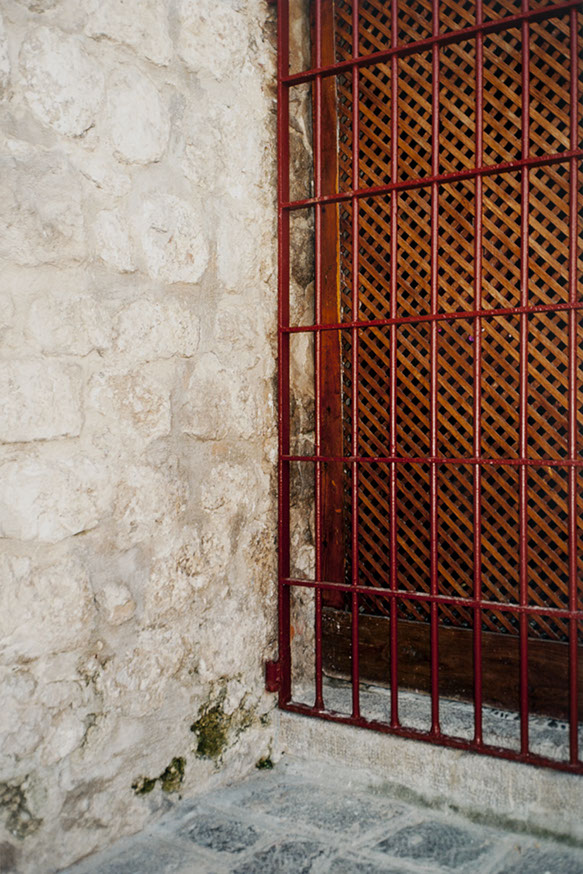
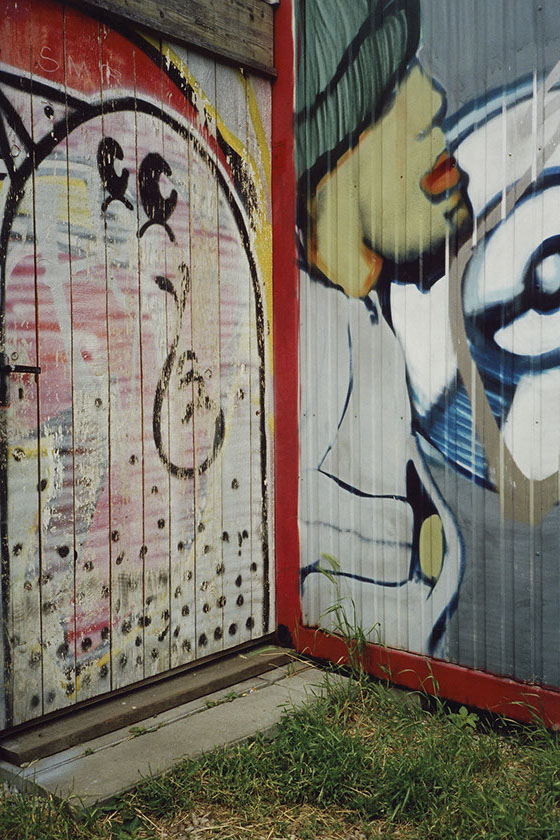
Ajuntament d‘Evissa, Ibiza, C-Print auf Alu, 60 x 40 cm · 2007
Oranienburger Straße, Berlin, C-Print auf Alu, 60 x 40 cm · 2005
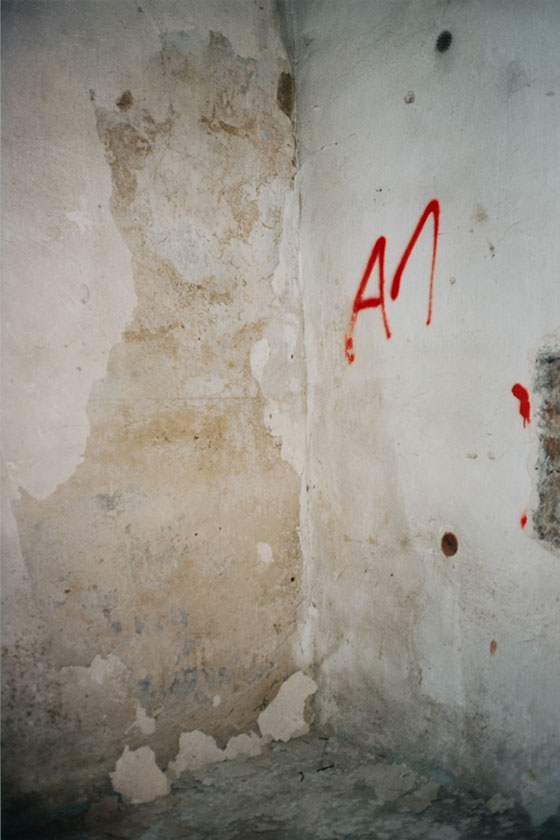
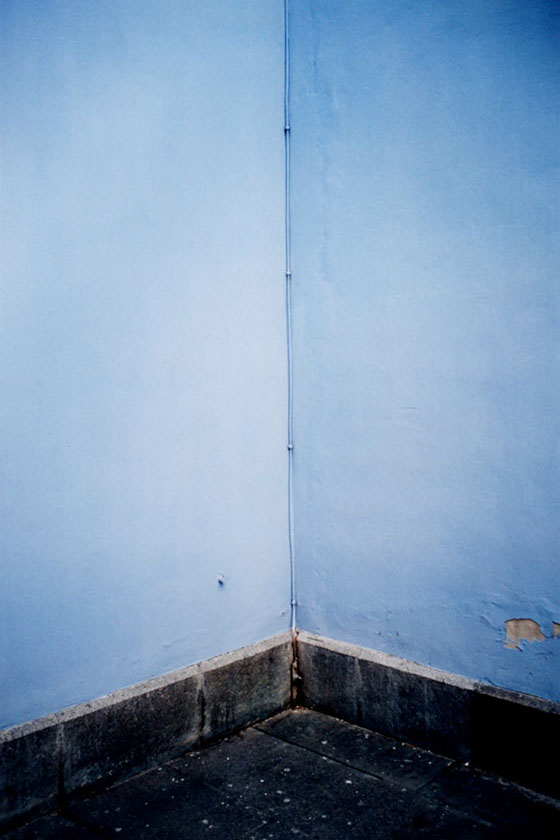
KK Telegraphenamt, Wien, C-Print auf Alu, 60 x 40 cm · 2013
Mykhailiusky Cathedral, Kiev, C-Print auf Alu, 60 x 40 cm · 2003
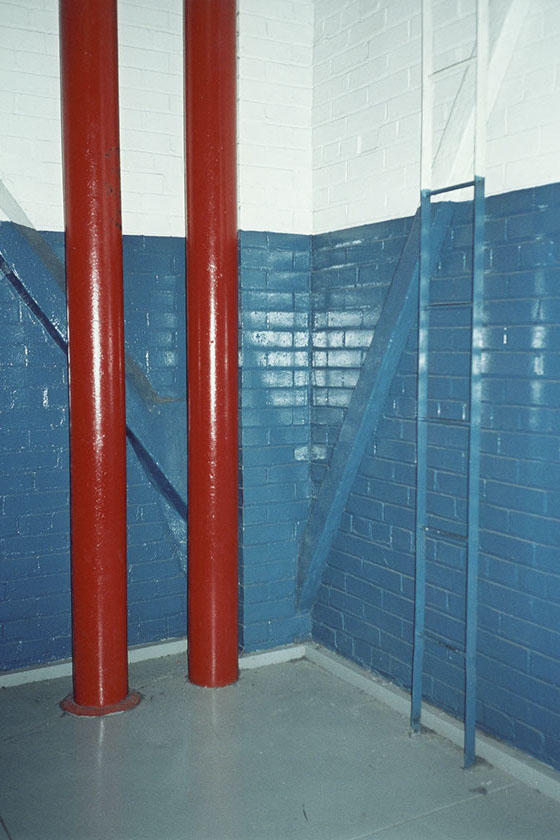
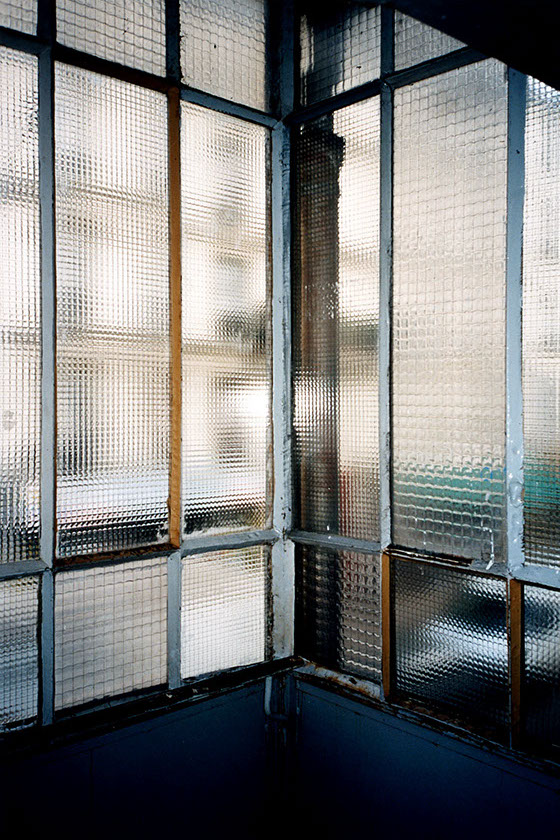
Empire State Building, New York City, C-Print auf Alu, 60 x 40 cm · 2000
Stalingrad, Paris, C-Print auf Alu, 60 x 40 cm · 2004